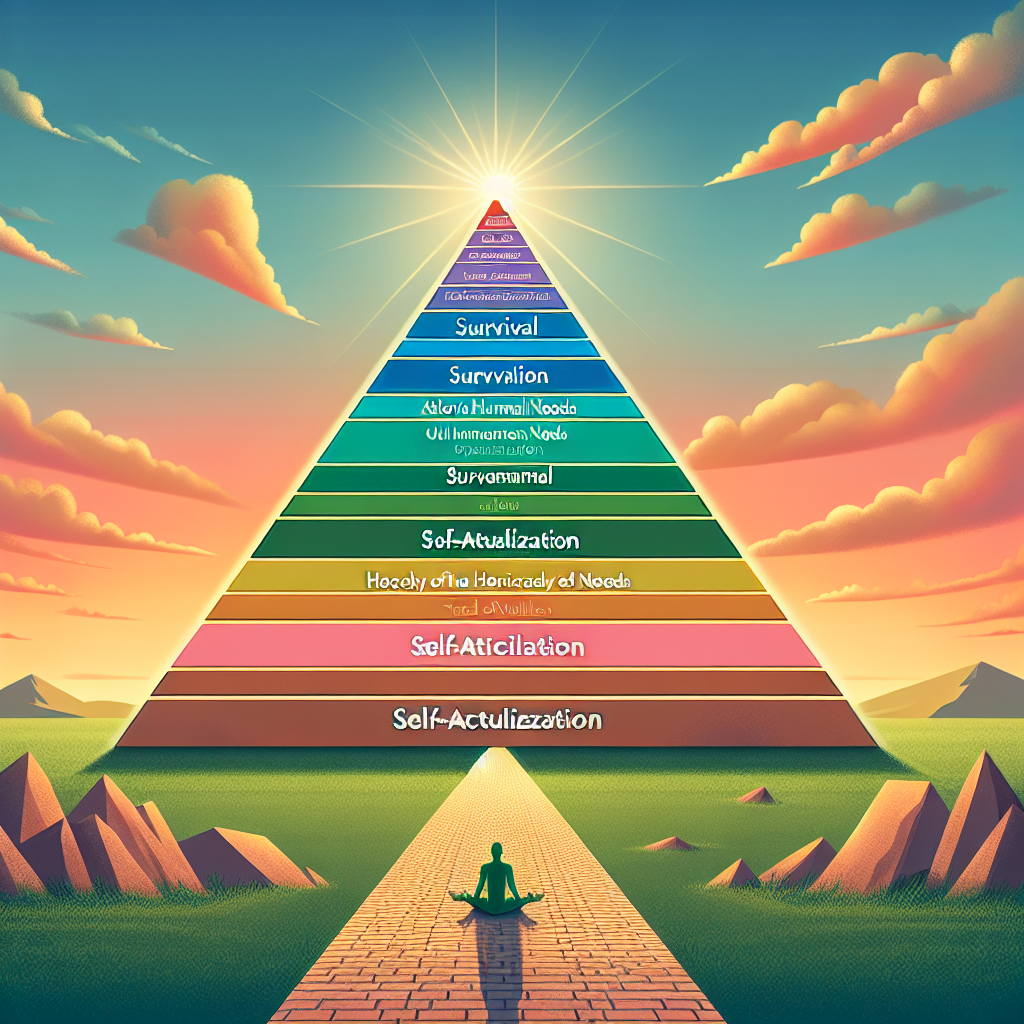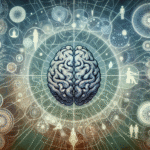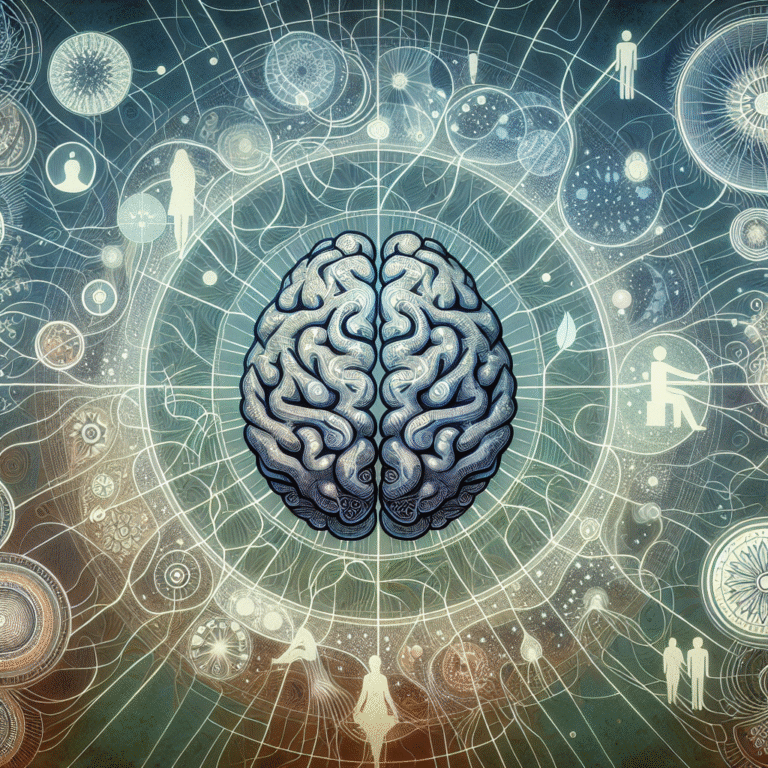
Hierarchy of Needs: A Proven Roadmap for Mental Health and Well-Being
Introduction
In our quest for mental health and well-being, we often face overwhelming pressures from the external world and our internal thoughts. Understanding the depths of our psychological needs can illuminate pathways for achieving balance and fulfillment. Maslow’s Hierarchy of Needs, a framework developed by psychologist Abraham Maslow, serves as an invaluable roadmap for navigating this landscape. This article explores Hierarchy of Needs: A Roadmap for Mental Health and Well-Being, breaking down its tiers, providing practical applications, and showcasing case studies that illustrate its impact on mental wellness.
Understanding Maslow’s Hierarchy of Needs
Maslow’s Hierarchy of Needs is typically illustrated as a pyramid, with five levels of needs stacked sequentially. From the base to the top, these are:
- Physiological Needs: Basic requirements for survival, such as air, water, food, and shelter.
- Safety Needs: Protection from physical and emotional harm, including financial security and health.
- Love and Belongingness Needs: Emotional needs for relationships, intimacy, and social connections.
- Esteem Needs: The desire for self-esteem, respect, and recognition from others.
- Self-Actualization Needs: The need to reach one’s full potential and engage in personal growth.
Each tier of the hierarchy must be addressed before moving to the next, creating a solid foundation for mental well-being.
Table 1: Maslow’s Hierarchy of Needs
| Level | Description | Examples |
|---|---|---|
| 1. Physiological Needs | Basic survival needs | Food, water, shelter |
| 2. Safety Needs | Security and stability | Job security, health insurance |
| 3. Love and Belongingness Needs | Social connections | Friendships, romantic relationships |
| 4. Esteem Needs | Recognition and self-respect | Achievements, confidence |
| 5. Self-Actualization Needs | Personal growth and fulfillment | Pursuing passions, creativity |
The Path to Mental Health: A Step-by-Step Guide
Step 1: Meeting Physiological Needs
The foundation of the Hierarchy of Needs: A Roadmap for Mental Health and Well-Being starts with physiological needs. Often overlooked, these basic requirements must be prioritized. Emotional distress often stems from unmet physical needs.
Case Study: Homelessness and Mental Health
A study of homeless individuals in urban areas reveals that lack of food and shelter correlates strongly with anxiety and depression. Until basic needs are met, addressing mental health through therapy or medication is challenging.
Analysis: This case highlights the necessity of basic needs as a prerequisite for addressing higher-tier psychological needs.
Step 2: Ensuring Safety Needs
Once physiological needs are met, safety takes precedence. This includes both physical security and emotional stability. People often experience anxiety when they feel unsafe, whether due to financial insecurity, health fears, or trauma.
Case Study: Domestic Violence Survivors
Research shows that survivors of domestic violence often struggle with PTSD, anxiety, and depression. Programs aimed at providing housing and legal support have improved their overall mental health outcomes significantly.
Analysis: This reinforces how meeting safety needs is essential for those whose mental health has been compromised.
Step 3: Fostering Love and Belongingness
The journey of Hierarchy of Needs: A Roadmap for Mental Health and Well-Being moves into the realm of love and belongingness. Humans are inherently social creatures, and the absence of supportive relationships can lead to loneliness and despair.
Case Study: School-Based Mental Health Programs
A school in a low-income area implemented mentorship programs connecting students with volunteers. Results demonstrated a significant reduction in behavioral issues and improvements in academic performance, underscoring the importance of belonging.
Analysis: This shows how fostering connections can improve mental health and counteract feelings of isolation.
Step 4: Building Esteem
Once individuals feel connected to others, they can strive for self-esteem, seeking recognition and respect. Lack of self-esteem can hinder personal and professional growth, exacerbating feelings of inadequacy.
Case Study: Career Development Workshops
A non-profit organization offering career development workshops found that participants reported increased self-worth and motivation after receiving vocational training. This led to higher employment rates and improved mental health outcomes.
Analysis: Activities that promote skills and recognition foster self-esteem and, by extension, mental well-being.
Step 5: Achieving Self-Actualization
The pinnacle of Maslow’s pyramid revolves around achieving one’s fullest potential. This self-actualization journey entails pursuing personal dreams and passions, leading to profound satisfaction and mental wellness.
Case Study: Art Therapy Groups
Art therapy programs providing creative outlets for individuals struggling with depression have shown notable improvements in emotional expression and self-discovery. Participants reported increased happiness and fulfillment.
Analysis: Engaging in creative pursuits enhances self-actualization, providing not only a stress outlet but encouraging personal growth.
Actionable Insights for Mental Well-Being
To leverage the Hierarchy of Needs: A Roadmap for Mental Health and Well-Being, individuals can take actionable steps:
- Evaluate Your Needs: Conduct a self-assessment to determine which needs require more attention.
- Prioritize Basic Needs: Ensure you are meeting your physiological and safety needs through adequate nourishment, financial stability, and safe living conditions.
- Cultivate Relationships: Join community groups, therapy sessions, or support networks to foster connections.
- Seek Personal Growth: Explore hobbies, skills, or educational opportunities that align with your passions.
- Practice Self-Compassion: Embrace your journey without self-criticism and celebrate progress towards self-actualization.
Conclusion
The Hierarchy of Needs: A Roadmap for Mental Health and Well-Being offers a structured framework for understanding and improving mental wellness. By prioritizing the fundamental needs outlined by Maslow and gradually advancing towards self-actualization, individuals can cultivate a fulfilling and balanced life. Remember, mental health is a journey; recognizing and addressing your needs along the way is crucial to achieving well-being.
FAQs
1. What is Maslow’s Hierarchy of Needs?
Maslow’s Hierarchy of Needs is a psychological theory that depicts human motivations arranged in a pyramid of hierarchical needs, from basic physiological needs to self-actualization.
2. How can I apply the Hierarchy of Needs to improve my mental health?
Start by evaluating your current needs. Address any unmet physiological and safety needs, enhance social connections, work on building self-esteem, and pursue personal interests that contribute to self-actualization.
3. What if my basic needs are not being met?
If you find that your basic needs are unmet, seek assistance through community services, social programs, or talk to a mental health professional. Addressing these needs is vital for overall well-being.
4. Can self-actualization be achieved without meeting lower needs?
While it’s theoretically possible to experience moments of self-actualization without meeting lower needs, sustained mental health is generally unattainable without addressing foundational needs.
5. Are there any resources to help with prioritizing needs?
Many apps, guides, and workshops focus on self-assessment and prioritization of needs are available, often tailored towards mental well-being, which can help you to assess your needs.
By following this roadmap, you can embark on a fulfilling journey toward better mental health and well-being. Embrace the process, and you may uncover strengths and possibilities you never knew existed.
















